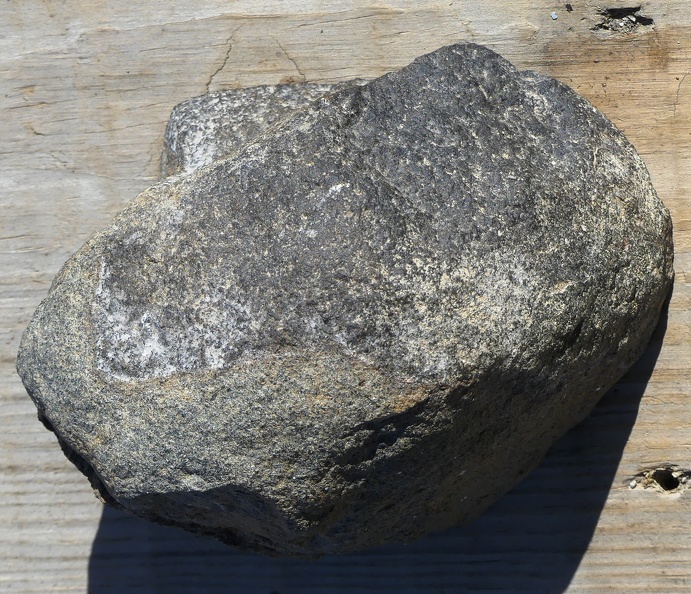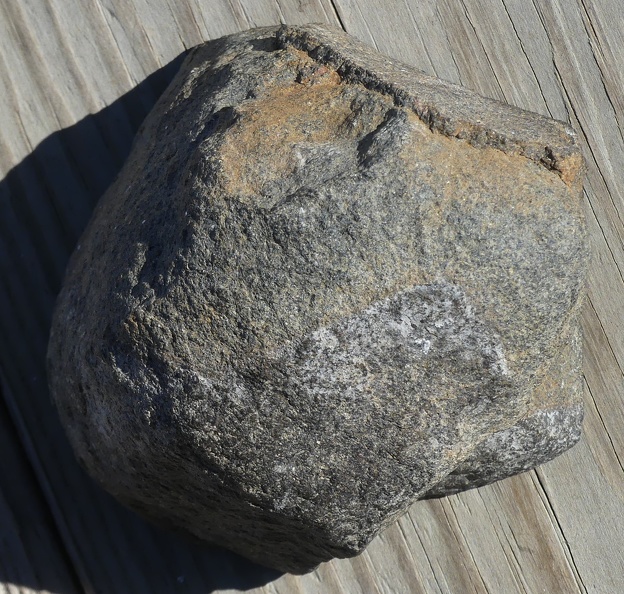|
|
Post by vegasjames on Feb 17, 2019 1:36:22 GMT -5
Wow, vegasjames , I can only imagine how mad that would have made me. As for the test, I'd read that university labs took a long time but I never would have thought it would take 12 years! After years without any luck it was just part of my routine to check likely looking rocks with a magnet. I nearly peed my pants when the magnet clicked onto the side of that rock and stuck. The person that helped me out knew another collector who was a buyer and had plans to meet him at an upcoming show. He said the pictures looked promising, so I mailed him a sample. The buyer had a gun-type instrument that could analyze the nickel content. The rest you know. I still keep an eye out and a magnet in my rock bag... Also depends on the meteorite. Iron meteorites take on average 9 years for classification. And rare meteorites such as martian, lunar or angrite meteorites can take as long if not longer since they undergo more testing.
And many labs are very back logged since more people have been sending in rocks they think are meteorites due to shows like Meteorite Men and news reports over-inflating some values.
That would be a hand held X-ray fluorescence spectrometer. Been wanting one but the good ones are around $40,000 new.
Don't know what pics you sent him but external pics sometimes can definitely rule a stone out but internal pics are the best since you can look for things like chondrules and iron-nickel inclusions.
If you suspect you have a meteorite then the best thing to start with is cutting off a sample then sanding off any saw blade metal. Then nickel test the sample by first dabbing DILUTE hydrochloric acid on the surface. Wait about 20 seconds for any nickel present to ionize. The put 4 drops of household ammonia on a cotton swab then 4 drops of dimethylglyoxime solution (DMG in denatured alcohol). Roll the cotton swab with the solutions on the acid treated surface. If it turns cherry red then nickel is present and it is worth pursuing. If not then you unlikely have a meteorite. There are rare exceptions where meteorites do not contain nickel, but this is extremely uncommon.
By the way labs hate when people use magnets on meteorites since it messes up their magnetic signature, which is one of the things they test for.
Also a no-no is handling the specimen too much as skin oils, etc or cutting with dirty water contaminate the samples they are testing for things such as amino acids, nucleic acids, sugars, alcohols, extraterrestrial water, etc.
|
|
|
|
Post by TheRock on Feb 17, 2019 3:10:13 GMT -5
Neat story thanks for the Update!  |
|
|
|
Post by grumpybill on Feb 17, 2019 11:46:42 GMT -5
Periodically, supposed chunks of this meteorite come up for sale locally. They always turn out to be slag from old iron furnaces.
|
|
lookatthat
Cave Dweller  Whatever there is to be found.
Whatever there is to be found.
Member since May 2017
Posts: 1,360 
|
Post by lookatthat on Feb 19, 2019 11:46:49 GMT -5
I have half a rock that supposedly is a meteorite. It doesn't look very pretty or special. A solid, dense, blocky dark thing with sections of darker crust on it. Didn't know that I shouldn't test it with magnets so I did -- it does attract them, not a strong attraction. It has been sawn in half and the cut reveals a consistent dark grey solid surface with minute (to the naked eye) metallic flecks evenly distributed.
Does it sound like a possible meteorite, or does anything stand out to tell you I have an ugly doorstop?
Questions about the test you described...
--How dilute a solution of HCl?
--Is that ONE cotton swab with both the household ammonia AND the DMG? Or a swab or HCl followed by one of DMG?
--Would a hobby store or hardware store carry these solutions?
|
|
|
|
Post by vegasjames on Feb 19, 2019 21:20:58 GMT -5
I have half a rock that supposedly is a meteorite. It doesn't look very pretty or special. A solid, dense, blocky dark thing with sections of darker crust on it. Didn't know that I shouldn't test it with magnets so I did -- it does attract them, not a strong attraction. It has been sawn in half and the cut reveals a consistent dark grey solid surface with minute (to the naked eye) metallic flecks evenly distributed. Does it sound like a possible meteorite, or does anything stand out to tell you I have an ugly doorstop? Questions about the test you described... --How dilute a solution of HCl? --Is that ONE cotton swab with both the household ammonia AND the DMG? Or a swab or HCl followed by one of DMG? --Would a hobby store or hardware store carry these solutions? Can you post a pic of the sawn and sanded smooth surface? Sometimes the saw blade will leave metal on the face.
The acid does not need to be strong at all. It is hard to say how much distilled water to add since hydrochloric acid solutions come in various strengths. But for common pool acid one part of acid and 10 parts of water should be dilute enough.
The acid is dropped on the face and spread around. Allow it to sit about 20 seconds. Then another swab is used putting 4 drops of the household ammonia then 4 drops of the dimethylglyoxime solution on the same swab then roll over the acid treated surface. If it turns cherry red then that indicates nickel.
Grocery stores carry household ammonia. Get the one without additives like soaps or scents. Hardware stores carry the denatured alcohol used to make the DMG solution. The DMG powder can be found on Ebay or chemical supplies. Shop around because some places charge a fortune.
You can also buy nickel test kits, which consist of the ammonia solution in one bottle and the DMG solution in another. More expensive but if you are doing a lot of tests this may be a better way to go for you. Here is one I found on Ebay. www.ebay.com/i/251189477900?chn=ps |
|
lookatthat
Cave Dweller  Whatever there is to be found.
Whatever there is to be found.
Member since May 2017
Posts: 1,360 
|
Post by lookatthat on Feb 22, 2019 13:36:48 GMT -5
Blah blah blah
Blah blah blah
Blah blah blah
I am trying to post pictures from Rockshow, but when I paste the code, all I get is Blah blah blah. I mean literally. The above section is me copying and pasting the code for 3 pictures. What am I doing wrong?
|
|
|
|
Post by 1dave on Feb 22, 2019 14:42:28 GMT -5
pull up the image, click on the upper right hand icon that pops up the location, copy that to your clipboard, then paste that information directly into your post. Do not use the usual image icon.
|
|
lookatthat
Cave Dweller  Whatever there is to be found.
Whatever there is to be found.
Member since May 2017
Posts: 1,360 
|
Post by lookatthat on Feb 22, 2019 14:47:05 GMT -5
How do I copy to clipboard? What clipboard? Where?
|
|
|
|
Post by 1dave on Feb 22, 2019 15:57:37 GMT -5
In the upper right hand corner see BBc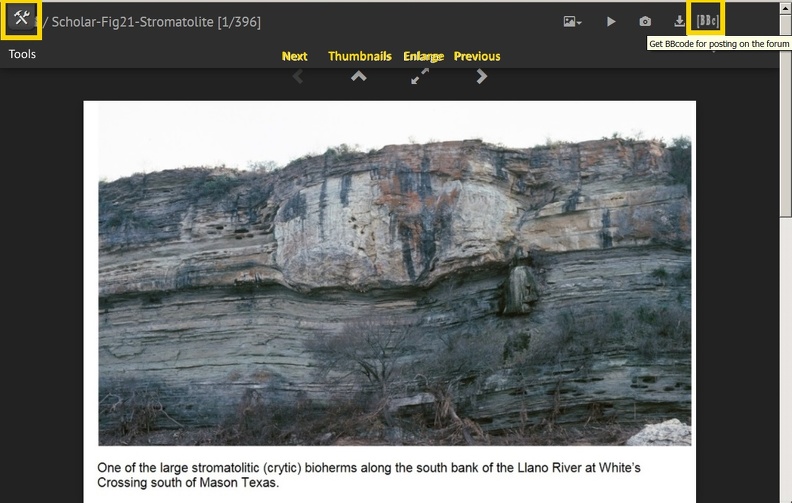 When you click on that, the code location for that image pops up along with the BB code to paste image already attached. [img]http://www.rockshow.rocktumblinghobby.com/i.php?/upload/2017/08/22/20170822152912-16ec9a50-me.jpg[/img]Press Ctrl (Control c (copy) at the same time and it is automatically copied to your computer clipboard. Move the cursor to where you want the image to appear and press Ctrl-Insert and the information will appear in your post. |
|
lookatthat
Cave Dweller  Whatever there is to be found.
Whatever there is to be found.
Member since May 2017
Posts: 1,360 
|
Post by lookatthat on Feb 22, 2019 18:48:26 GMT -5
|
|
lookatthat
Cave Dweller  Whatever there is to be found.
Whatever there is to be found.
Member since May 2017
Posts: 1,360 
|
Post by lookatthat on Feb 22, 2019 18:53:32 GMT -5
it worked! It worked!
They didn't come out as good as I'd hoped.
The little flecks are metallic and flash in the sun.
Heavy, attracts a magnet.
|
|
|
|
Post by vegasjames on Feb 22, 2019 20:00:46 GMT -5
It really does not look like a meteorite. Looks like a common basalt, which around here are frequently magnetic. Let's start with the surface. The surface looks way too rough for a meteorite. Look at the pics of meteorites I posted. The meteorites are coming is at tremendous speeds. When they hit our atmosphere the frictional heat melts the surface and ablates off any rough protrusions. Therefore they tend to have smooth surfaces unless heavily weathered. It also appears to have visible quartz, which is not found in meteorites. As for the inside. The vast majority of meteorites are chondrites, which will contain small round silicate balls called chondrules unless an impact melt where the chondrules get obliterated. In that case though the interior would look like it was burnt. You can see a partial impact melt in this meteorite from my collection in the lower right: 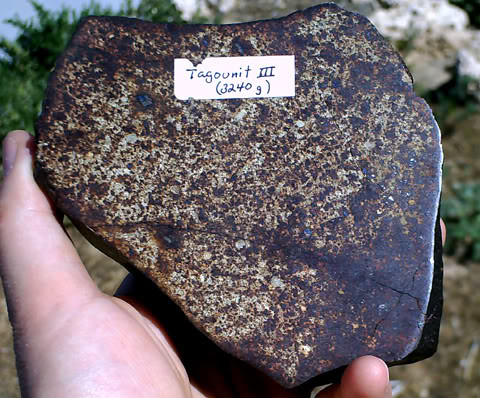 Tagounitface_1 Tagounitface_1 by James Sloane, on Flickr Hard to tell what is metal without a clear close up, but it is possible the metals was left behind by the saw blade when cutting. Achondrites are very rare and have a different look due to a different composition. Here is my sample of the Millbillillie eucrite achondrite that fell in October of 1960. Both the surface and the interior as an example. 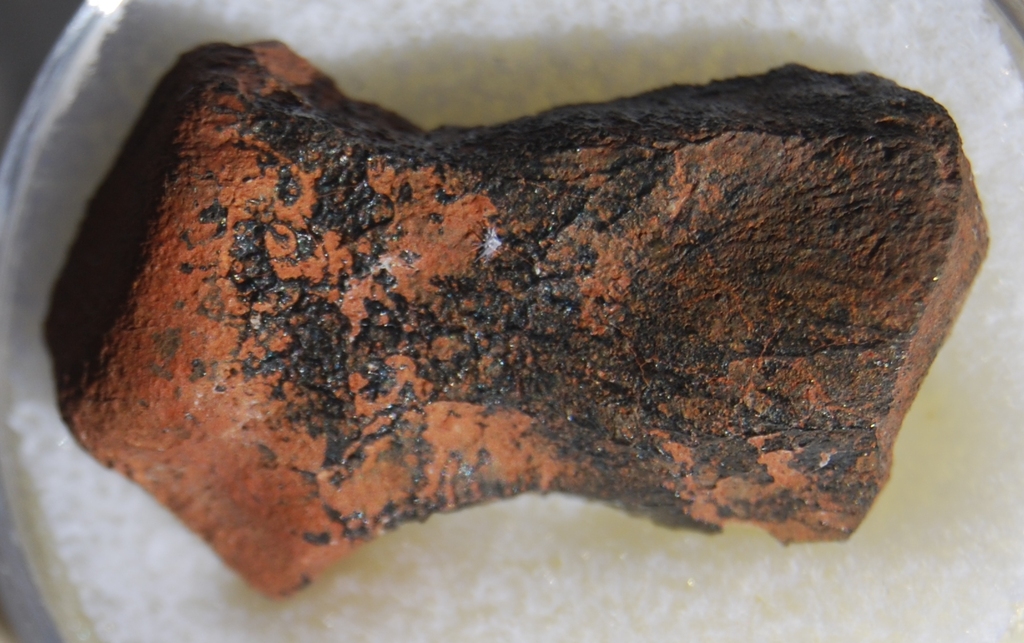 DSC_0084 DSC_0084 by James Sloane, on Flickr 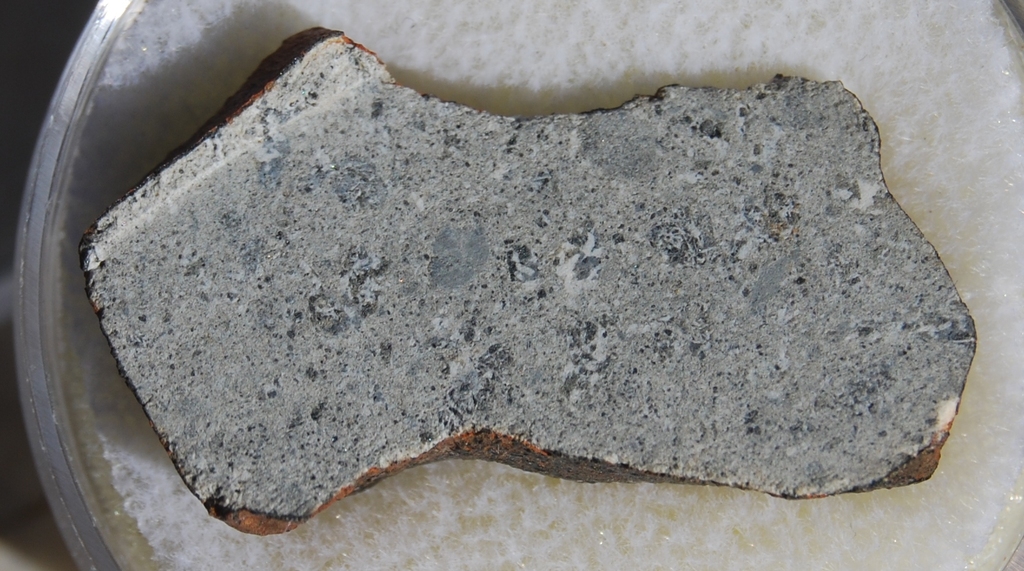 DSC_0083 DSC_0083 by James Sloane, on Flickr |
|
lookatthat
Cave Dweller  Whatever there is to be found.
Whatever there is to be found.
Member since May 2017
Posts: 1,360 
|
Post by lookatthat on Feb 22, 2019 20:14:53 GMT -5
Hi James, there actually isn't any quartz in it. Not the best pics.
Also the metallic bits are visible in the uncut parts, but it won't come out in the pics.
But it's probably still just a rock.
|
|








